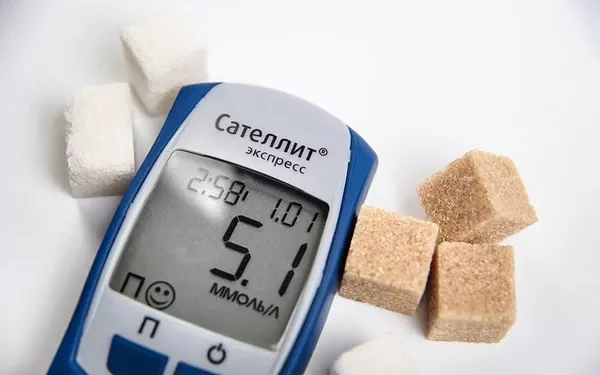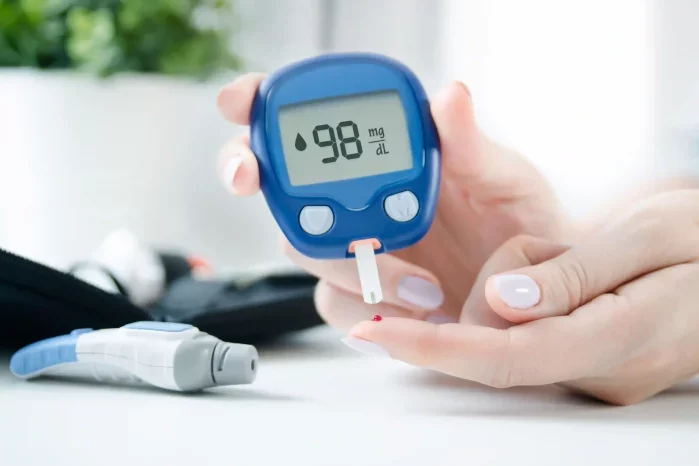In the realm of diabetes management, monitoring blood glucose levels is crucial. However, there is another important aspect that sometimes requires attention: ketone levels. To monitor these, healthcare professionals and patients use two distinct devices – glucose meters and ketone meters. While both serve essential roles in managing diabetes, they are not interchangeable. This article will delve into the differences between ketone meters and glucose meters, their respective uses, and why both are important in the comprehensive management of diabetes.
Understanding Glucose Meters
Glucose meters are portable electronic devices designed to measure blood sugar levels. These devices are widely used by individuals with diabetes to keep track of their blood glucose levels and manage their condition effectively.
How Glucose Meters Work
Sample Collection: To measure blood glucose, a small drop of blood is required. This is usually obtained by pricking the fingertip with a lancet.
Testing: The drop of blood is then placed on a test strip, which is inserted into the glucose meter. The meter reads the sample and displays the blood glucose level within seconds.
Technology: Glucose meters use an enzymatic reaction to measure glucose levels. Most glucose meters use glucose oxidase or glucose dehydrogenase enzymes to oxidize the glucose in the blood sample. This reaction generates an electrical current proportional to the glucose concentration, which the meter then converts to a glucose reading.
Importance of Glucose Monitoring
Regular monitoring of blood glucose levels helps individuals with diabetes to:
Adjust their diet, physical activity, and medication to maintain blood glucose levels within the target range.
Detect hyperglycemia (high blood sugar) and hypoglycemia (low blood sugar) promptly.
Prevent complications associated with uncontrolled blood glucose levels, such as cardiovascular disease, nerve damage, and kidney problems.
Understanding Ketone Meters
Ketone meters are devices used to measure the concentration of ketones in the blood. Ketones are chemicals produced when the body breaks down fat for energy, which happens when there is not enough insulin to use glucose for energy.
How Ketone Meters Work
Sample Collection: Similar to glucose meters, a blood sample is required for ketone testing. A lancet is used to obtain a drop of blood, typically from the fingertip.
Testing: The blood drop is placed on a ketone test strip, which is then inserted into the ketone meter. The meter analyzes the sample and displays the ketone level.
Technology: Ketone meters generally measure beta-hydroxybutyrate (BHB), the predominant ketone body in the blood. The test strip contains chemicals that react with BHB, and the meter measures the reaction to determine the ketone concentration.
Importance of Ketone Monitoring
Monitoring ketone levels is particularly important for individuals with type 1 diabetes, as they are at risk of developing diabetic ketoacidosis (DKA), a potentially life-threatening condition. Ketone monitoring helps to:
Detect early signs of DKA, allowing for timely medical intervention.
Guide insulin dosage adjustments, especially during illness or when blood glucose levels are persistently high.
Ensure safe management of ketogenic diets, which are sometimes used therapeutically for other conditions.
Differences Between Glucose Meters and Ketone Meters
While both glucose meters and ketone meters are used to analyze blood samples and provide valuable information for diabetes management, several key differences exist between the two.
Measurement Focus
Glucose Meters: Measure the concentration of glucose in the blood. This is the primary focus for daily diabetes management.
Ketone Meters: Measure the concentration of ketones in the blood, specifically beta-hydroxybutyrate. This is crucial for detecting and preventing DKA.
Test Strips
Glucose Meters: Use glucose-specific test strips that react with glucose oxidase or glucose dehydrogenase.
Ketone Meters: Use ketone-specific test strips that react with beta-hydroxybutyrate.
Usage Frequency
Glucose Meters: Used frequently, often multiple times a day, to monitor blood sugar levels and make necessary adjustments to diet, activity, and medication.
Ketone Meters: Used less frequently, typically during periods of illness, high blood glucose levels, or when there are symptoms of ketoacidosis.
Cost
Glucose Meters: Generally more affordable, with a wide range of options available on the market. Test strips for glucose meters are also relatively inexpensive.
Ketone Meters: Often more expensive, both in terms of the device and the test strips. This is due to the more specialized nature of ketone testing.
Why Both Meters Are Important in Diabetes Management
For individuals with diabetes, both glucose meters and ketone meters serve critical roles in managing their condition and preventing complications.
Daily Blood Glucose Monitoring
Regular blood glucose monitoring is the cornerstone of diabetes management. It helps individuals understand how their body responds to various foods, activities, and medications. By keeping blood glucose levels within the target range, individuals can reduce the risk of long-term complications such as:
Cardiovascular disease
Neuropathy (nerve damage)
Nephropathy (kidney damage)
Retinopathy (eye damage)
Ketone Monitoring for DKA Prevention
For individuals with type 1 diabetes, or those at risk of diabetic ketoacidosis, ketone monitoring is essential. DKA can develop rapidly and can be life-threatening if not treated promptly. Early detection of elevated ketone levels allows for timely medical intervention, which can prevent the progression to severe DKA.
Situational Monitoring
There are specific situations where ketone monitoring becomes particularly important, including:
Illness: During illness, the body may produce more ketones due to decreased food intake or increased energy requirements.
High Blood Glucose Levels: Persistent high blood glucose levels can lead to the production of ketones. Monitoring ketone levels in such situations helps to detect and manage the risk of DKA.
Ketogenic Diets: For individuals following a ketogenic diet for therapeutic reasons, monitoring ketone levels ensures they are maintaining the desired state of ketosis safely.
Integration of Glucose and Ketone Monitoring
Some modern devices offer dual functionality, allowing for both glucose and ketone testing with a single meter. These dual meters provide convenience and efficiency, particularly for individuals who require frequent monitoring of both parameters. However, it’s important to note that even with dual meters, separate test strips are still required for glucose and ketone measurements.
Benefits of Dual Meters
Convenience: Reduces the need to carry multiple devices.
Efficiency: Simplifies the monitoring process, particularly during times of illness or high stress when frequent testing of both glucose and ketones may be necessary.
Comprehensive Management: Provides a more complete picture of metabolic health, aiding in better overall diabetes management.
Limitations of Dual Meters
Cost: Dual meters and their test strips can be more expensive than standard glucose meters.
Availability: Not all regions or healthcare systems may have easy access to dual meters.
Accuracy: It is essential to ensure that the dual meter used is validated for accuracy in both glucose and ketone measurements.
Practical Tips for Using Glucose and Ketone Meters
To get the most accurate and useful information from glucose and ketone meters, it is important to follow best practices for their use.
Glucose Meter Tips
Wash Hands: Always wash hands with soap and water before testing to avoid contamination that can affect readings.
Use Fresh Lancets: Use a new, clean lancet for each test to minimize discomfort and reduce the risk of infection.
Proper Storage: Store test strips in their original container, away from extreme temperatures and humidity.
Calibration: Follow the manufacturer’s instructions for calibrating the meter if required.
Record Results: Keep a log of blood glucose readings to identify patterns and make informed decisions about diabetes management.
Ketone Meter Tips
Testing Times: Test for ketones during illness, when blood glucose levels are above 250 mg/dL (13.9 mmol/L), or when experiencing symptoms of ketoacidosis (e.g., nausea, vomiting, abdominal pain, rapid breathing).
Hydration: Stay well-hydrated, as dehydration can affect ketone levels.
Emergency Plan: Have a plan in place for what to do if ketone levels are elevated, including when to seek medical attention.
Education: Understand the signs and symptoms of DKA and educate family members or caregivers on how to use the ketone meter and what steps to take if ketones are present.
Regular Checkups: Regularly consult with a healthcare provider to review ketone monitoring results and make any necessary adjustments to the management plan.
See also: When Should I Be Testing My Blood Sugar?
Conclusion
While glucose meters and ketone meters serve different purposes, both are essential tools in the comprehensive management of diabetes. Glucose meters are indispensable for daily blood sugar monitoring, helping to prevent the long-term complications of diabetes. Ketone meters, on the other hand, are crucial for detecting and preventing diabetic ketoacidosis, a serious and potentially life-threatening condition.
Understanding the differences between these devices, their respective uses, and the situations in which each is necessary can empower individuals with diabetes to manage their condition more effectively. For those with type 1 diabetes or those at risk of DKA, integrating ketone monitoring into their routine can provide an additional layer of safety and peace of mind.
In the ever-evolving landscape of diabetes care, advancements in technology continue to improve the accuracy, convenience, and accessibility of glucose and ketone monitoring. By staying informed and utilizing these tools effectively, individuals with diabetes can achieve better health outcomes and a higher quality of life.
Related topics:
What Range Should I Keep My Blood Sugar?


























